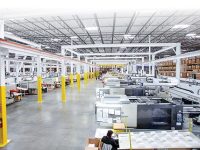Choosing the equipment to monitor boils down to a few areas that include: criticality; expense and safety; reliability; and environment and efficiency.
CRITICALITY
Criticality is often the biggest driver for selecting equipment to sample. Following are criticality considerations—ranked from the most to least imperative.
- Critical to overall operation and/or very high costs without redundancy
- Critical to overall operation and/or very high costs with redundancy
- Non-critical or less critical to overall operation and/or moderate costs without redundancy
- Non-critical or less critical to overall operation and/or moderate costs with redundancy
- Non-production equipment and non-critical to overall operation and/or low costs with or without redundancy
EXPENSE & SAFETY
Expense doesn’t always relate to criticality; even a single piece of inoperable equipment can grind operations to a halt. Because of this, equipment with costly maintenance, parts, labor, and/or downtime should be sampled. From a safety perspective, equipment whose unscheduled shutdown or failure could result in injury or death is a major consideration. This equipment, which must be sampled, includes firewater systems, emergency braking, speed control systems, and much more.
RELIABILITY
Equipment with unpredictable lifecycles or failure modes should be sampled. This includes equipment with components that have a history of failing prematurely and/or failing catastrophically without warning.
ENVIRONMENT & EFFICIENCY
Anything that operates in a harsh environment is a good candidate for lubrication monitoring. This includes equipment operating in areas with significant ambient contamination or that is subject to leakage from nearby systems such as steam, gland water, etc.
A final factor is any red flag that points to reduced efficiency, such as reduced power output or an out of range operating temperature. Examples include a sluggish injection molding machine. This may be an indication of varnish, which can be detected through oil analysis.
For most companies, trying to identify the equipment to test will involve a lot of guesswork. Through TestOil PRO field services, companies can take advantage of a site audit that will identify the equipment that needs to be sampled, along with the frequency and test slate.
For more information on TestOil PRO and working with TestOil for oil analysis and training visit www.testoil.com. Contact: 216-251-2510; sales@testoil.com.
With more than 30 years of experience in the oil analysis industry, TestOil focuses exclusively on assisting industrial facilities with reducing maintenance costs and avoiding unexpected downtime through oil analysis program implementation. As industry experts in diagnosing oil-related issues in equipment such as turbines, hydraulics, gearboxes, pumps, compressors and diesel generators, TestOil provides customers with a guarantee of same-day turnaround on all routine testing. TestOil PRO certified lubrication professionals educate the industry on oil analysis through public and private onsite training. These highly experienced professionals provide a variety of onsite services; from collecting oil samples to conducting failure analyses to writing work orders. For more information on partnering with TestOil on oil analysis programs or training opportunities visit https://testoil.com. Contact: Michael Barrett 216-251-2510; sales@testoil.com.


